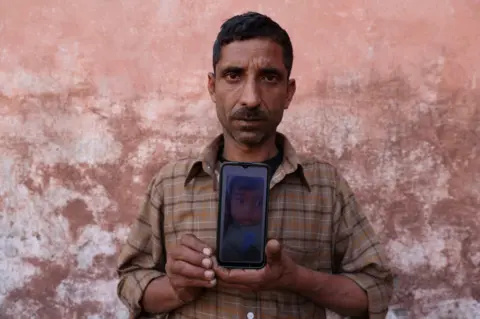- Mystery of the ‘port deal’ Dawn
- Pakistan courts US with pitch for new Arabian Sea port Financial Times
- PPPs Raza Rabbani urges govt to take parliament into confidence on new US policy Geo.tv
- Pakistan’s Balochistan deal marks new strategic…
Blog
-
Mystery of the ‘port deal’ – Dawn
-

Scientist on three-week off-grid hike finds out he’s won the Nobel prize
Dr Ramsdell, along with two other scientists, won the prize for their research into how the immune system attacks hostile infections.
The winners share a prize fund worth 11m Swedish kronor (£870,000).
After Ms O’Neill received the messages, the…
Continue Reading
-
Gaza’s future – Dawn
- Gaza’s future Dawn
- Palestinians in Gaza hope for ceasefire ‘as soon as possible’ Dawn
- What kind of future does Gaza face, if Israel ends its war on it? Al Jazeera
- Two years on, Gaza’s agony calls for action: China Daily editorial China…
Continue Reading
-
Gaza woman faces more misery two years after she was pictured in grief – Dawn
- Gaza woman faces more misery two years after she was pictured in grief Dawn
- Inside one battle-scarred Gaza building, displaced families tell the story of the war BBC
- See how two years of war, loss and heartbreak has changed these Palestinians in…
Continue Reading
-
Lahore High Court summons top law officers over delay in Punjab LG polls – Dawn
- Lahore High Court summons top law officers over delay in Punjab LG polls Dawn
- ECP decides to hold local govt polls in Punjab in last week of December Dawn
- ECP to hold Punjab local government polls in December The Express Tribune
- Local bodies…
Continue Reading
-
Floods dampen Pakistan’s growth outlook – Dawn
- Floods dampen Pakistan’s growth outlook Dawn
- Pakistan’s economic recovery a myth? Millions still struggle in poverty; here’s what World Bank says Times of India
- World Bank predicts slower growth, higher inflation for Pakistan The Nation…
Continue Reading
-

Inside India’s cough syrup obsession
Soutik BiswasIndia correspondent
 Reuters
ReutersA father holds a photo of his child, who is one among at least 12 children under five years of age, whose deaths have allegedly been linked to a cough syrup in Jammu It’s happening again.
In early September, a…
Continue Reading
-
US approves major missile sale to Pakistan – Business Recorder
- US approves major missile sale to Pakistan Business Recorder
- Pakistan to be sold advanced US air-to-air missiles by Raytheon Dawn
- The Quiet Approval of New AMRAAM Missiles May Revive Pakistan’s F-16 Program quwa.org
- US names Pakistan, Saudi…
Continue Reading
-
FDI outflows: reflection of diminishing confidence – Business Recorder
- FDI outflows: reflection of diminishing confidence Business Recorder
- Exporters hedge risks via forward dollar sales Dawn
- Moment of Reckoning Daily Times
- Pakistan Eyes $200B Investment from Qatar newztodays.com
- Pakistan: Infrastructure, Inflation,…
Continue Reading
-
Tax collection shortfall challenge: IMF likely to stipulate new steps – Business Recorder
- Tax collection shortfall challenge: IMF likely to stipulate new steps Business Recorder
- Rate cut unlikely this month, says SBP governor Dawn
- FBR moves to publicise civil servants assets Geo.tv
- IMF shares draft MEFP with Pakistan as talks near…
Continue Reading